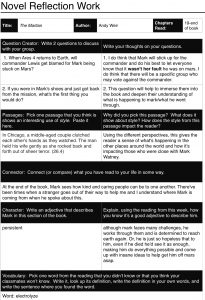Welcome back to my humble, humble blog. Today is a very special day, it’s the day where I have my Transitional Presentation of Learning. This is a semi-annual meeting for the student, teacher, and the parents to reflect on the year. These happen twice during the span of the school year and you can check out last summer’s post where I reflected the the work I was proud of and what I could improve on. There’s been a little change to our conferences and this time they’re called, “TPOLs” This stands for Transitional Presentation of Learning and are to address the question, “Why do you feel ready to advance to the next grade level?” Using examples from our blog, we are to reflect on our growth as a learner, our work habits, work ethic, areas for improvement, teamwork, responsibility, and production of high quality work as a PLP learner. We are also reflecting on our goals we set at the beginning of the year and seeing how we’ve progressed and completed those goals. Instead of reading off a blog or script, we are to tell a story about our learning and experiences this year.
To start this off, I’m going to reflect on my growth as a learner. Some things I’ve improved on would be my time management and organization. I’m able to predict how long something will take me and I’m able to break the work down into parts so that I can complete sections of the project little by little and I won’t feel overwhelmed. I’ve become a lot more skilled with the iPad and its applications. I’m able research things faster and I can use apps like Explain Everything, Keynote, or Paper by 53 to express my ideas. My ability to problem solve has grown a lot this year, with making prototypes for our Blue Sky project to our Metaphor Machines.

I’ve learned the consequences of procrastination, such as staying up late, getting sick, missing out on events, or falling behind in school. Once I begin a project, I work very hard on it but I will sometimes put off initiating it. I would be delayed after school by eating and slacking however I’ve improved much on that. Knowing which project to work on first and prioritizing is something I have some room to improve on. Knowing how much sleep I need and how much I need to eat to have enough energy for the day is also something I could improve on. Working in a neat invironment is something I’ve learned to be key to having a quality project with little stress. I’ve learned to ask for help and when to ask. I need to continue on not procrastinating but planning and utilizing a calendar to my advantage. Becoming a leader is something I’d like to do to make it easier to bring my ideas across. You can look at how I plan to do this by reading my gifted writing blog post.
An example for revision would be my Cell City project. This was a science project we did where we needed to match organelles inside a cell to city parts and make a poster of the city. If I’m being honest, my first draft wasn’t all that pretty. So I took it home and spent way too many hours on it, paying a lot of attention to details instead of the overall picture.
In a project awhile back called the Metaphor Machine I was shunned out and wasn’t allowed to do much. I changed the situation by instead of asking, “Can I work on this?” To, “I’m going to work on this.” This helped me to be assertive in group projects so that I can take part in what I’m skilled with. Another example of teamwork is that I always try to help others whether it be stacking chairs after school, picking up garbage, or cleaning up after the Blue Sky exhibition instead of being in the gym.

I’m proud of lots of work I’ve done but some of the greatest would include my writing that was part of the Frankenstuffie project. These were journal entries that my frankenstuffie was sending to his long lost friend. Another piece of work I’m proud of would be my Jean Talon video which I spent a lot of time animating and it was worth it.
I think that moving up into grade 10 will be different however I think I can tackle the challenge. I’ve learned so many great skills from PLP that will help me in the future and my learning process. To have had the field trips made the concepts we were learning real and gave us a unique experience. Having the hands on learning gave me a better understanding and made me more passionate about the topic we were covering. I’m so fortunate to have been able to work in PLP and learn from the great teachers and students.
To conclude, this Twitter POL has helped me to know what my strengths are and what I could improve on. I can’t wait to see where grade 10 will take me!






















